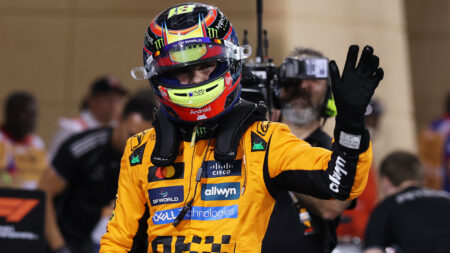
Tomorrow's F1 starting grid for the 2025 Bahrain Grand Prix
Oscar Piastri will be at the front of starting grid for the 2025 Bahrain Grand Prix after a dominant qualifying performance, that left him 0.4sec and five places ahead of…
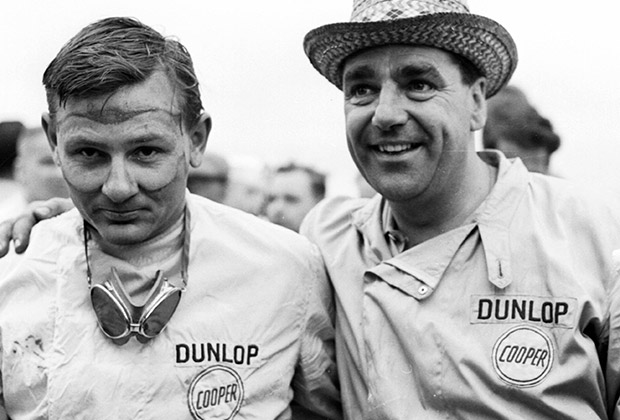
McLaren with John Cooper after the 1959 US Grand Prix
Bruce McLaren shouldn’t have been there. Masten Gregory should.
Cooper team leader Jack Brabham reckoned the latter the most fearless man he met. Yet even the gung-ho ‘Kansas City Flash’ had to admit defeat on this occasion; the broken shoulder sustained while self-ejecting from a runaway Toj-Jag at Goodwood’s TT was still giving him gyp.
So McLaren got the call. He was 22.
The personable New Zealander with a cherubic face was tough, too. His childhood was blighted by Perthes disease – a hip bone disorder – and its tedious treatment: plaster casts, interminable traction, wheelchair then splints. It left him with a permanent limp, a powerful upper body and a lust for life tempered by patience and leavened by a winning smile and good humour.
Though only 20 when he arrived in the UK (in 1958), already he was a remarkably well-rounded individual. That he finished fifth – and won the Formula 2 category for Cooper – on his GP debut says a lot.
That he did so at the Nürburgring says it all.
When Cooper decided in 1959 to subcontract its F2 programme to Ken Tyrrell and Alan Brown, McLaren found himself unexpectedly promoted to Formula 1 alongside Brabham and Gregory. He would receive a huge shock.
The French GP at Reims was torrid. The road circuit broke up under an unforgiving summer sun and cars and drivers were machine-gunned with grit, stones and rocks. A gasping Brabham purposely smashed his screen to let more air in. Even so, he had to be lifted out after finishing third behind the Ferraris of Tony Brooks and Phil Hill.
McLaren, though possessing the physical energy to haul himself out, was mentally spent and his face, smeared in “pink champagne” – a mix of sweat and blood from his smashed goggles – contorted into uncontrollable sobs. It’s doubtful he ever felt further from home. His parents, present for the first time overseas, must have wondered what their son had let himself in for. Were all GPs like this?
No. They were the hardest-earned points of his career.
A fortnight later, and showing no ill effects, McLaren fought an epic duel for second place with the BRM of Stirling Moss at Aintree’s British GP. He finished two-tenths in arrears despite setting joint-fastest lap.
He had arrived.
Moss and his great British rival Mike Hawthorn had shown the way by becoming GP winners at 25 and 24 respectively, but McLaren, not yet 22, was of another order again.
Teenagers ‘Little Mo’ Connolly and Duncan Edwards, one a tennis Grand Slam winner and the other a Manchester United first-teamer, were super-rare exceptions in the 1950s. Sports stars then, it was commonly acknowledged, supposedly reached a competitive peak during their late twenties and early thirties.
Then there was motor racing.
Hadn’t Juan Fangio in 1957 won a fifth world championship, aged 46? And weren’t people genuinely surprised when promptly he called time? And Tazio Nuvolari had been 42 when miraculously he upstaged the Silver Arrows at the 1935 German GP, and 55 when he almost won a post-war Mille Miglia in dramatic circumstances.
In contrast, Guy Moll, a superstar in the making, had fatally overstepped the mark at 24, at Pescara in 1934. And the 28-year-old Bernd Rosemeyer, an undoubted superstar, had unwisely ignored the cautionary words of Rudi Caracciola about side winds on the Frankfurt-Darmstadt Autobahn in January 1938.
Motor racing, a dangerous sport that you contested sitting down, was meant to favour the experienced.
Yet McLaren appeared so composed and unaffected. If he was famous, he didn’t feel famous. He shared a bedsit, with a communal bathroom on the landing. He ate simply, out of financial necessity, at a local café, and he would, if necessary, build his own racing car from tubing stacked in racks.
There was little hoopla or hype, just his respect for the sport and its respect for the nice boy with talent, maturity and humility. That wouldn’t change even after his first GP victory.
Almost three months had passed since the Italian GP and few were relishing the thought of travelling transatlantic to flat, featureless Sebring for the season finale. Moss was, of course, because Moss was Moss, the ultimate racer – plus he needed to win and set fastest lap if he was to end his four-year sequence as the championship runner-up. And McLaren was because he was bright-eyed, bushy tailed and newfangled.
Bruce McLaren’s driving career in brief
Four Grand Prix victories
1964 Tasman Series Champion
1966 Le Mans 24 Hours winner
1967 & ’69 Can-Am Champion
In contrast, Brabham, the points leader, could take it or leave; the opening of his new garage in Chessington and the pressing search for a home for his family were of equal, if not greater, import. Talk of the race’s possible cancellation hardly improved his mood. Nor did the sliver of glass lodged in his left eye, legacy of a warm-up race at Nassau the previous weekend.
Recently crowned constructors’ world champions Cooper, too, was in disarray. Brabham’s engine overheated during practice. New gaskets were fitted overnight, but no risk could be taken and he swapped cars with McLaren. The latter’s new mount promptly chewed its CWP, while the former’s was discovered to have a twisted chassis, juddering brakes and a cracked mainshaft.
McLaren remained throughout the perfect team player: uncomplaining, malleable, and willing to pitch in with the hard-pressed mechanics – until a doctor ordered him and Brabham to rest before the race.
His unstinting support continued in the GP, acting as an unfussy wingman to Brabham as they circulated 1-2 in the aftermath of pole-sitter Moss’s early retirement because of a broken Colotti gearbox in his Rob Walker-run Cooper. The third title aspirant, Brooks, had pitted at the end of the first lap after being rammed by an inattentive team-mate.
A momentary hesitation of his usually bombproof 2.5-litre Climax ‘four’ caused Brabham a flutter, but thereafter his works Cooper ran like clockwork.
Just five miles to go: title, Chessington, home. Four miles, three, two, one… At which point he ran out of fuel.
McLaren pulled alongside, braked and paused for further orders, whereupon Jack agitatedly waved him by: Moss’s 42-year-old French team-mate Maurice Trintignant had been catching them quickly for several laps.
McLaren floored his throttle to win by nine-tenths. He was 22 years 104 days old – a record overshadowed on the day by champion Brabham’s pushing of his car across the finish line, but which lasted until the 2003 Hungarian GP.
Fernando Alonso’s mark – 22 years 26 days – has in turn been bettered by Sebastian Vettel, who was 21 years 73 days when he won the 2008 Italian GP for Toro Rosso.
The youngest driver at a GP meeting (Turkey 2006), the youngest pole-sitter (also at Monza ’08), the youngest GP leader (Japan ’07), the youngest points-scorer (USA ’07), the youngest podium-finisher (again at Monza ‘08), and the youngest world champion (2010) – all these records belong to Vettel. He has by a wide margin trumped McLaren as an F1 driver.
But there’s major difference: the German had been expected to win sooner rather than later. The podium at Monza 2008 – Vettel, Heikki Kovalainen and Robert Kubica – remains the youngest in GP history at a fortnight under 24. Karting, grooming, sims and prevailing attitudes.
The average age of the top 10 on the grid at Sebring was a month over 31.
Vettel is assuredly outstanding, but I don’t believe he has ever stood out in the way that McLaren did on December 12, 1959: the birth of a new age.
‘If you’re good enough, you’re old enough’ is 54 today.

Oscar Piastri will be at the front of starting grid for the 2025 Bahrain Grand Prix after a dominant qualifying performance, that left him 0.4sec and five places ahead of…
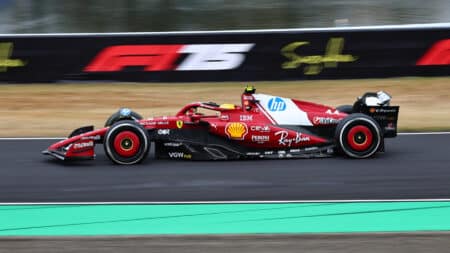
Ferrari is the Formula 1 team bringing the biggest update for its car in the Bahrain Grand Prix
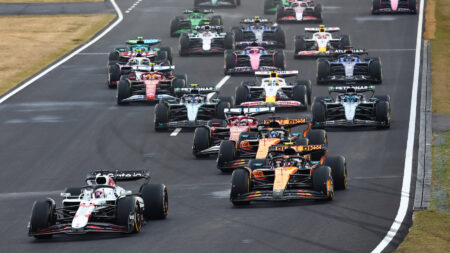
The FIA says engine manufacturers have committed to the planned 2026 rules, with some modifications
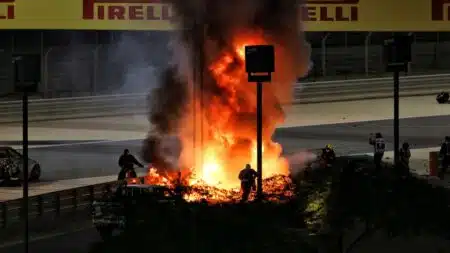
Over the years, the Bahrain Grand Prix has offered plenty of on-track - and some off-track - drama. These are the top controversies from the Sakhir event